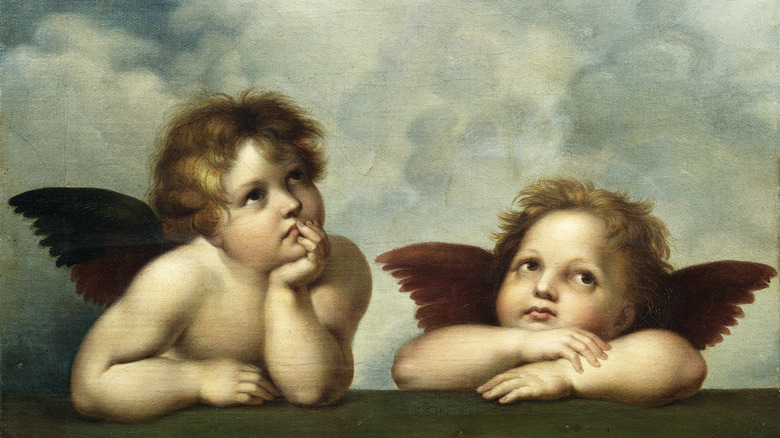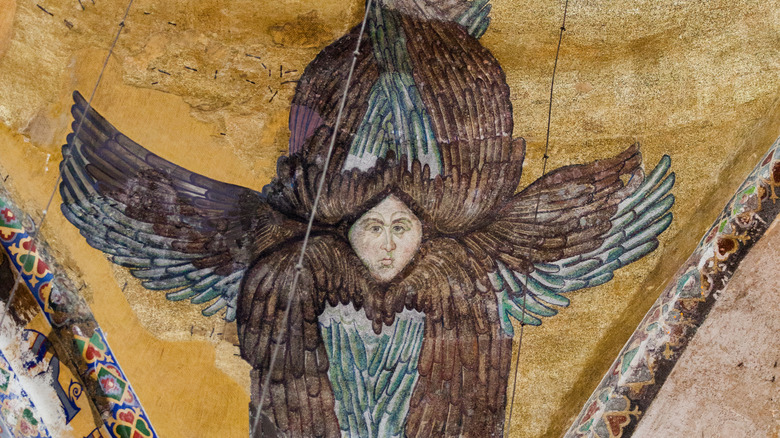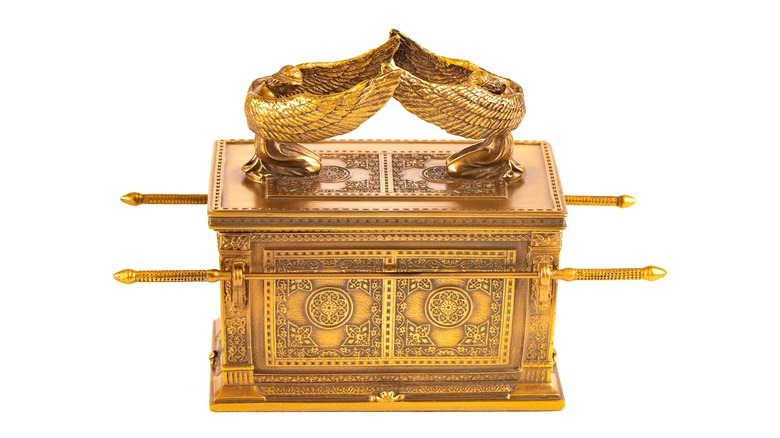What The Bible Says About Cherubs
Today, adorable chubby cherubim can be seen on everything from Valentine's Day cards to Renaissance frescos, but what, if anything, do they have to do with Christianity? In the Bible, cherubs are not cute winged babies at all, but powerful immortal beings that rank among the most important creatures in the angelic order.
The depiction of cherubs as babies comes from the Renaissance, when artists embraced a renewed mania for Classical mythology. Cherubs were gradually conflated with the Roman deity Cupid, and even today, you will sometimes see cherubs used in romantic motifs where they seemingly have no place. When and how the two became confused is not 100% clear, but the ancient Romans loved adding tiny "Cupidines" to their art. Given that both creatures have wings, it is easy to see how Christians in later eras came to see them as angels. It is also sometimes argued that the Hebrew word "cherubim" derives from the Aramaic word for "child-like," although this is disputed (via My Jewish Learning).
The Bible's descriptions of cherubs paint a wholly different picture. While many things about cherubs remain a mystery, they are mentioned quite a few times in the Old Testament, most significantly in the dream-like prophecies of Ezekiel. Cherubs are depicted as symbols of strength and protection, a far cry from the gentle baby-like beings we know today.
Biblical descriptions of cherubs
If you spend much time loitering in very old churches, you may have spotted the slightly more accurate version of the biblical cherub decorating cornices and cupolas. They usually resemble a disembodied head surrounded by a flurry of wings — such as the ones decorating the Hagia Sophia in Istanbul, pictured above.
This version of the cherub comes from the best biblical description we have of them, located in the book of Ezekiel. In the text, the prophet describes his unearthly visions of the cherubim and other angels, albeit his explanation is a little difficult to fathom. In one passage (Ezekiel 1:4), the Bible says that " ... their form was human, but each of them had four faces and four wings. Their legs were straight; their feet were like those of a calf and gleamed like burnished bronze. Under their wings, on their four sides they had human hands."
Later on, in Ezekiel 10:14, the text describes the cherubim's many faces, stating that "One face was that of a cherub, the second the face of a human being, the third the face of a lion, and the fourth the face of an eagle." The text leaves us guessing as to what the "cherub" face among the four actually looked like, but there is no reason to assume they looked like babies.
What do Cherubs even do?
Cherubs first appear in the Bible in the book of Genesis, and there are scattered references to them throughout the Old Testament. A lone cherub is described as guarding the way to the tree of life with a flaming sword, after Adam and Eve get kicked out of Eden, and in Exodus too, cherubs appear as a symbol of protection.
In Exodus 25:18-20, the Ark of Covenant is adorned with two protective cherubim made from pure gold: "And make two cherubim out of hammered gold at the ends of the cover. Make one cherub on one end and the second cherub on the other; make the cherubim of one piece with the cover, at the two ends. The cherubim are to have their wings spread upward, overshadowing the cover with them. The cherubim are to face each other, looking toward the cover." Finally, they appear in 2 Samuel 22, when God flies down from heaven on the wings of some cherubs.
Any additional information about cherubs is typically drawn from non-biblical sources. The mystical Jewish school of Kabbalah and the apocryphal Book of Enoch both give additional backstory to the cherubs, as well as the other angels, thus giving rise to much of the mythology surrounding them today.


